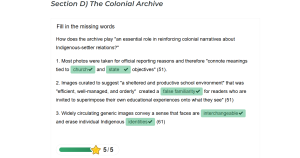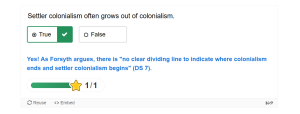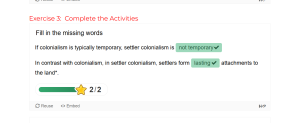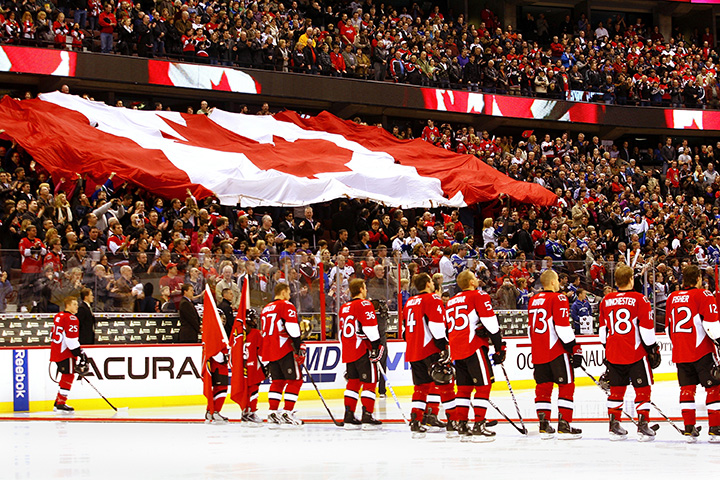4 Chapter 4 (Completed)
Activity Completion:




Padlet Response (unable to publish in the designated padlet at the moment!):
Briefly define (point form is fine) one of the keywords in the padlet (may be one that you added yourself).
- Christianity was too feminine and there were concerns regarding whether or not men were still ‘manly’ enough and could fight in wars to defend their nations.
- ‘Muscular Christianity’ branched off from Christianity, and targeted at young men to strengthen them physically and religiously/mentally.
- Combination of religious faith and the body. The body is a holy thing given that must be trained.
- Disciplining the body was a way of disciplining the mind with strength and resilience, as a determination of will.
- Ultimately, sports were used to foster relationships with God and reinforce gender-coded activities.
Notebook Answers:
Which part of the chapter stood out to you? What were your feelings as you read it? (50 words)
It stood out to me how there is a preconceived popular idea that Indigenous children did not play sports until they entered residential schools. There were different types of sports and games created, they are just not typically discussed beyond Indigenous communities. I also find it amazing that they are able to incorporate their culture and values. Something which I feel gets lost in the translation of mainstream sports.
I was unaware about how the children who made it out of residential schools were targeted to be soldiers in the Canadian military. It was upsetting yet unsurprising how the government did not want Indigenous soldiers then went back on their word when they needed more men enlisted.
Although we have discussed in this module how the colonial project sought to suppress Indigenous cultures, it is important to note that it also appropriates and adapts Indigenous cultures and “body movement practices” (75) as part of a larger endeavour to “make settlers Indigenous” (75).
What does this look like? (write 2 or 3 sentences)
Indigenous cultures and body movement practices are attempted to be destroyed- or at least suppressed, if they cannot be reclaimed through cultural appropriation. These are the only two ways to make the “settlers Indigenous”, by forcing settler ways of life or stealing from Indigenous culture. This can look like cultural dances and attire being appropriated or forcing Westernized sports on Indigenous residential school children. Ultimately, it looks like the actions that normalize the settlers as the ones who are posing as the Indigenous people of the land.
What values do we learn from different sports and games? Answer one of these questions (drawing on what you have learned in section one of this module or prior reading) and record it in your Notebook.
From sports and games, we learn a lot of values about positive sportsmanship, endurance, will power, caring for our bodies and confidence. As I mentioned previously, I think that mainstream Westernized sports have wavered from these core values and is instead focused on winning, power and domination. I feel this rooted in the ‘Muscular Christianity’ notion that young men were expected to follow in the late 19th century. Since the emergence of this, sports were seen as a gendered activity to be conquered. There was less learning about the body and values and more stress on perfection- through physique and/or gameplay. I think with less of an emphasis on sports as a masculine pursuit of strength, we can better take in the intended values to be learned through sporting.
Make note of the many ways sport is considered medicine by the people interviewed in this video.
Sport is medicine by these interviewees because it….:
- Provides connection to family and friends
- Is an escape from painful realities and pasts
- Gives opportunity to incorporate Indigenous culture, like language
- Releases built up emotions
- A way to connect with passed over family
- Allows for opportunities to create a career
- Reminds us we are all one
- Highlights Indigenous resilience
- Can be used to remind us of reconciliation and how to promote it
- Games are from the creator
What does Waneek Horn-Miller mean when she says that the government is “trying but still approaching Indigenous sport development in a very colonial way”?
There are still barriers of financial matters that exist, as Indigenous families are predisposed to things like poverty and crime. This is on top of how discrimination occurs based on Indigeneity specifically. These factors make it extremely difficult for parents of Indigenous children and Indigenous individuals to navigate sports competitively.
Waneek mentions that there are not many programs or supports that give Indigenous children an equal opportunity to compete and be represented. This makes it difficult for her to encourage young Indigneous athletes to chase big dreams, like going to the Olympics. Waneek calls for the government to try to work with Indigenous communities to meet their needs and make a genuine effort in supporting their inclusion in sports.
Add an image or brief comment reflecting some of “binding cultural symbols that constitute Canadian hockey discourse in Canada.” Record your responses in your Notebook as well.

Immediately I think of the NHL and the National Canadian Hockey League in particular. These Jerseys have the Canadian flag on them, flags are weaved around the stadium, displayed on the ice, national anthem is sung, etc… Hockey is known as an Canadian sport, yet not an Indigenous one. The sport is utilized to spread Canadian pride, which in hand ignores and suppresses the Indigenous population whose land we reside on. I think that there needs to be more representation and respect for Indigenous culture and more opportunities to scout unseen talented Indigenous athletes.
Media Attributions
- activity4
- acitvity3
- acitivity2
- activity1
